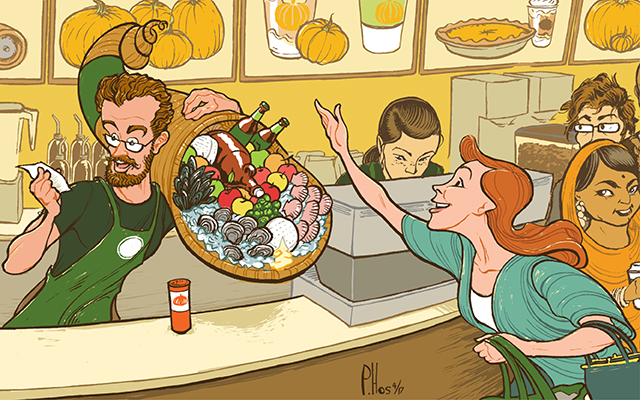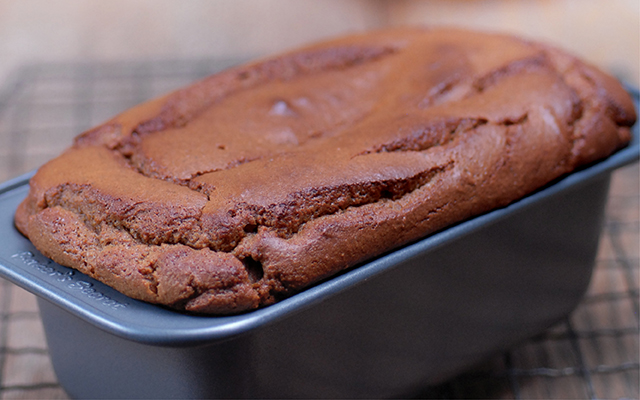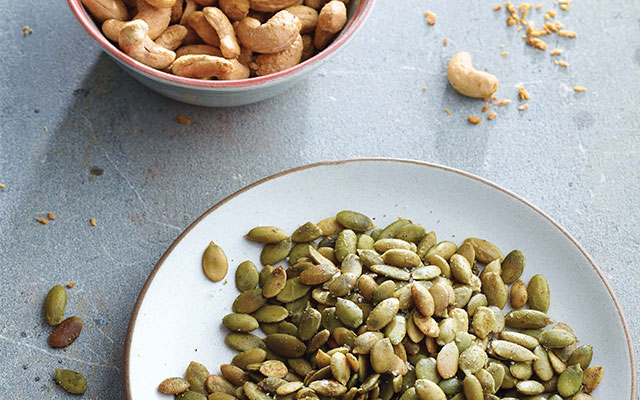Is it totally Grinch-y to hate pumpkin-spice-latte season? Because I totally hate pumpkin-spice-latte season. It’s not that I hate pumpkin spice itself — who could hate the combination of cinnamon, ginger, allspice, mace, nutmeg, and cloves? That’s a delicious combination, and only crazy people would deny that. What I hate is distilling fall to just that one sweet and cozy, mass-marketed essence.
There’s loads more to love about eating in the fall, and much of it is beyond cozy. It’s a time for flavors more fleeting, old, bitter, mineral, wild, fat, confronting, and even disquieting. Here are a few things to love in the fall — outside of the coffee shop.
Old-School Apples
Do you know what Americans used to eat a hundred years ago? So many more apples than we eat today. Late summer and early fall are the times to find the weird heirloom varieties that have been growing in our nation’s orchards since the days of Calvin Coolidge.
Chestnut Crabapples are my absolute favorite. The golf-ball-size delicacies have a flavor I can spend hours trying to describe, like a glass of fine wine. They’re a bit like a buttery baked potato, but mineral and crisp. A bit like a roasted chestnut, with a celery edge. A little lemon curd, a little fennel — trust me, it’s some apple.
A century ago, American orchards were bursting with similarly haunting apples. Early settlers planted count-less trees across the continent; many pioneers were required to plant 50 apple or pear trees as part of their government land grant.
Each region of the country developed apples suited to its climate, so Alabama apples are different from Maine apples. If you’re in the South, try to find an Arkansas Black apple: Its yellow skin turns so deep red that it looks black. In Alabama there’s a Carter’s Blue, which has a bluish bloom, like a ripe plum, and smells like a rose. Indiana has an heirloom apple called the Winter Banana, so named for its fragrance and flavor.
I’ve never eaten a Winter Banana, but if I suddenly jump in my car and head toward Muncie, you’ll know why.
Sweet Shellfish
You’ve probably noticed how the silly gray squirrels in the park grow as fat as raccoons before winter hits. Oysters, mussels, clams, and scallops do the same thing. That’s what makes the Nantucket Bay scallop season so thrilling. Beginning in November, New England eateries serve up scallops that are as sweet as fresh butter, as briny as the sweet bay wind, and as toe-curling sensuous as any food on Earth.
All the great oyster festivals happen in the fall. There’s Prince Edward Island’s September Inter-national Shellfish Festival; various October oysterfests in and around Wellfleet, Mass., and Shelton, Wash.; and literally dozens more in Maryland, Virginia, California — everywhere with a coast. The sea has seasons!
The Corniest Polenta and Grits
Everyone knows that late summer and early fall are the best times to enjoy sweet corn, so it makes sense that they’re also the best time for polenta.
Last year, I found some produced by a local farmer, freshly milled and packed in a refrigerated bag piled among the pumpkins and other fall fruits in the produce section. It was so fragrant with the sweet scent of corn and unexpected notes of white peach and burnt butter that I had one of those heart pangs of longing as I tasted it. Why can’t polenta taste like this all year?
Because it can’t. It can taste like that only in September or October because of the sun and the nature of time. Take advantage.
Bright, Bitter, Fresh-Hop Beer
Hops are a climbing bine (not a vine, for boring botanical reasons, but they look like one), and for hundreds of years people used them as a flavoring herb for foods — imagine something between basil and pine.
In medieval times, Europeans discovered that hops also have amazing preservative qualities, which led to their use in brewing beer. In fact, what most of us think of as the distinct bitter flavor of beer is actually the bitter flavor of hops. (Beer starts out as a sort of grain broth, closer to the flavor of Cheerios than Budweiser.)
Most beer is made with dried hops, which are as vividly different from fresh hops as dried basil is different from fresh. Fresh-hopped beers appear, usually briefly, in September or October, and I adore them. They’re bright and brisk, piney and springy, vital and vibrating with freshness.
I could go on like this forever. Brussels sprouts after the first hard frost are sweeter than any you’ll find the rest of the year. If you’re lucky enough to taste an autumn game bird, such as grouse or partridge, you’re eating like royalty. Summer milk is the sweetest of the year, because grazing cows munch on buttercups; roughly 60 days later, fall Brie is also the sweetest of any you’ll find in other months.
You’ll never see these flavors advertised on a digital sign in your office-tower’s coffee shop, but I, your humble Grinch, suggest they’re worth seeking out. Because fall has a whole lot more to offer than a cozy beverage.




This Post Has 0 Comments